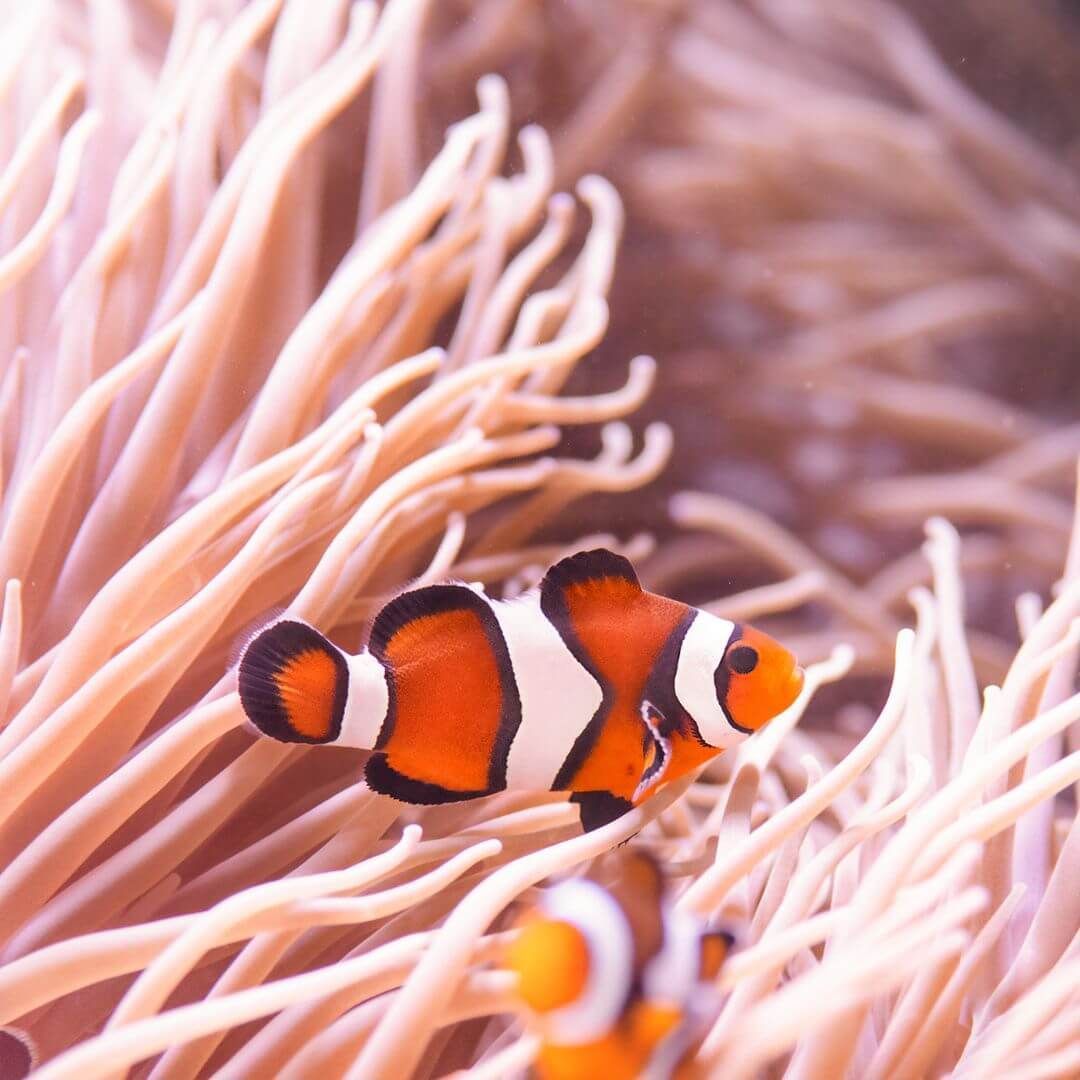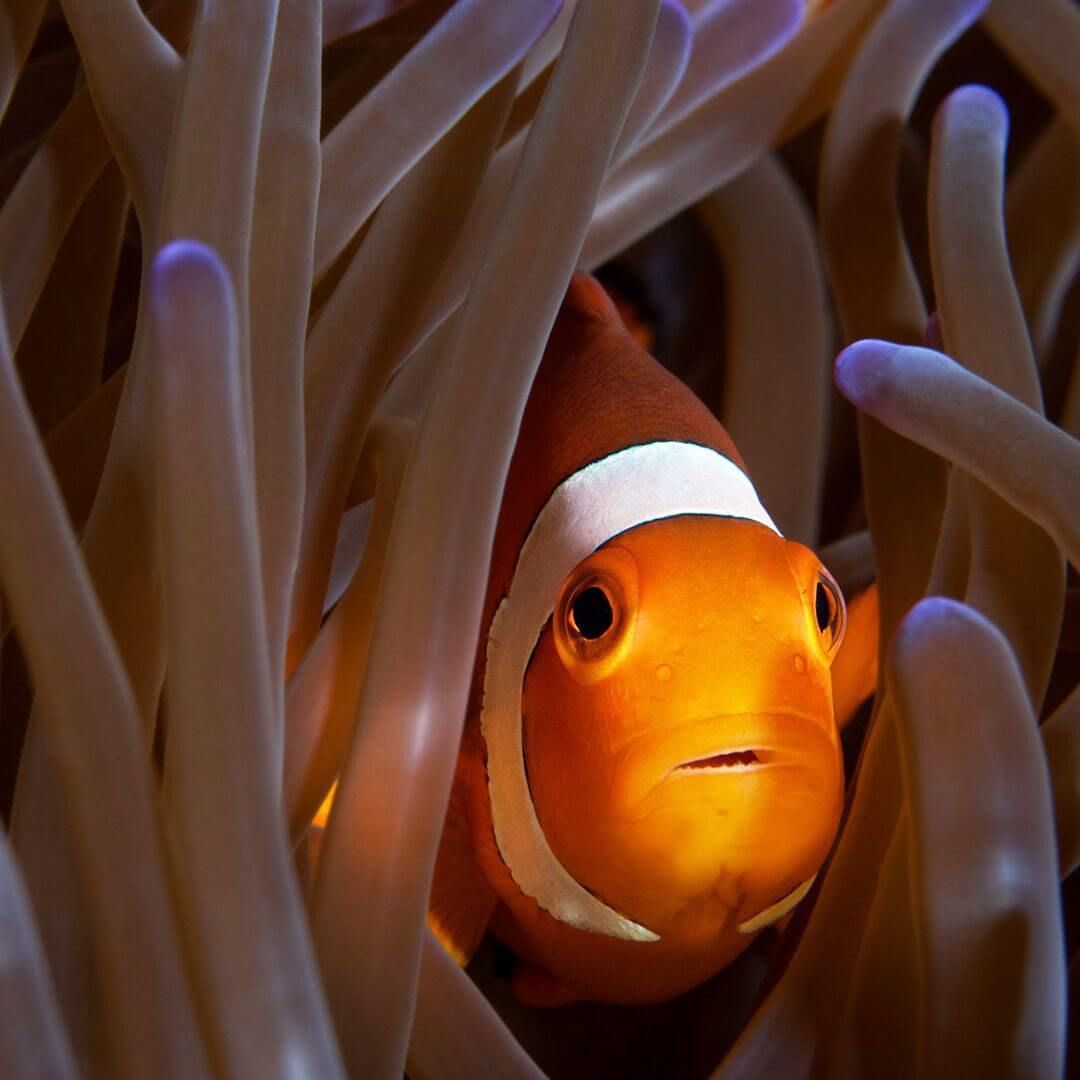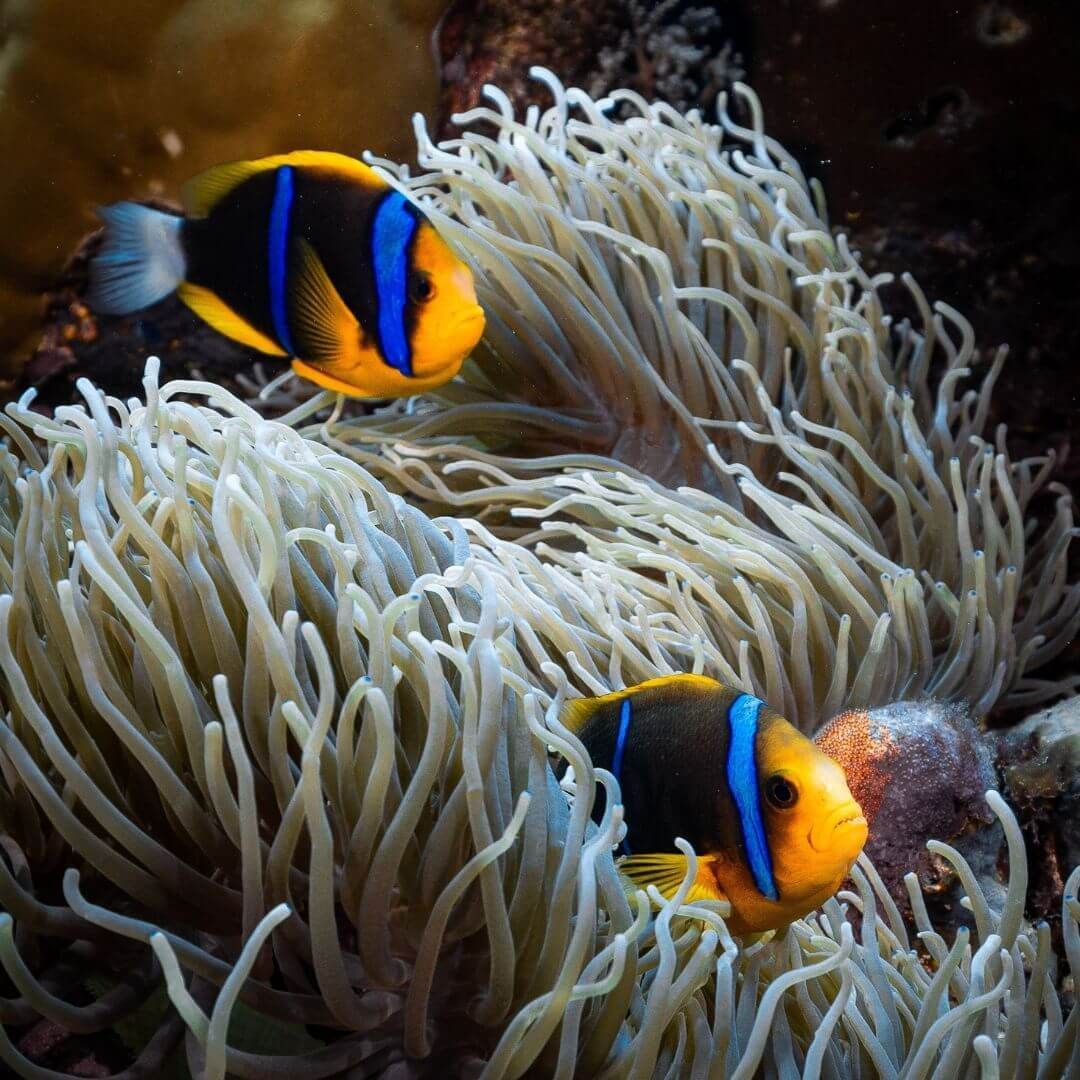Clownfish

Let's Learn About Clownfish
Word of the Week
Mutualism
Mutualism is a type of symbiotic relationship where two different species benefit from their interaction with each other. Mutualism can also be called mutualistic relationships.
Clownfish and sea anemones have a mutualistic relationship. Sea anemones give clownfish protection, while clownfish give sea anemones nutrients.
Fast Facts

Where do clownfish live?
Clownfish live in the ocean. They are found in warm, tropical water in the Indopacific.
The Indopacific is the area where the Indian Ocean meets the Pacific Ocean. The Indopacific is between Asia and Australia. Clownfish typically live near coral reefs.
What do clownfish eat?
Clownfish are omnivores, they eat meat and plants.
Most clownfish eat scraps of fish and other food left behind by sea anemones. They also eat zooplankton, worms, and algae.


What traits do clownfish share?
Clownfish have traits like...
- Small, colorful bodies.
- A thick coating of mucus.
- A mutualistic relationship with sea anemones.
- They are all born male.
How many clownfish are there?
There are about 30 species of clownfish.
Fortunately, most species of clownfish are not endangered. However, they face some threats, like collection for the aquarium trade. Clownfish are caught from the wild and sold to live in aquariums. They also face threats like habitat loss due to warming ocean water.

Species Spotlight
Sea Anemones &
Clownfish
Sea anemones are related to jellyfish and coral. They all have tentacles covered in stingers. When touched, the tentacles shoot out tiny, venomous darts. The stingers help sea anemones catch prey and defend themselves from predators.
Clownfish are related to other small, colorful fish called damselfish. They both live in warm, shallow water near coral reefs. Clownfish and some damselfish rely on sea anemones for survival. They are often seen swimming through the tentacles without being stung.
So, why don't clownfish get stung by the sea anemone's stinging tentacles?
Clownfish do not get stung by sea anemones because of a thick layer of mucus on their body. Scientists have two hypotheses about how this mucus helps them.
- The mucus acts like a shield against the venom.
- The mucus does not trigger the sea anemone to release the venom.
Clownfish hide in sea anemones to stay safe from predators. They also eat leftover food from the sea anemone. In return, clownfish give sea anemones nutrients (in their waste) and defend the sea anemone from predators and parasites.
Both clownfish and sea anemones benefit from this relationship, so we call it mutualism or a mutualistic relationship. While sea anemones can survive without clownfish, clownfish rely on sea anemones for protection and food. Without sea anemones, clownfish would not survive.
Conservation Corner
The Trouble With Mutualism
*Mutualism: A relationship between two different organisms where both organisms benefit. Also known as a mutualistic relationship.*
Clownfish and sea anemones have a mutualistic relationship. Clownfish are protected and get food scraps from sea anemones. Sea anemones get nutrients from clownfish waste and protection from predators.
Sea anemones can survive without clownfish. However, clownfish cannot survive without sea anemones. If sea anemones became extinct, clownfish would also become extinct.
The trouble with mutualism is it often requires us to protect two organisms instead of just one, especially when one organism cannot survive without the other.
Sea anemones are threatened by warming ocean waters. The ocean is warming as the atmosphere warms because of greenhouse gases and climate change. Sea anemones cannot survive in water that is too warm, causing many species to die off and become endangered. This also threatens clownfish.
To protect sea anemones, and therefore clownfish, you can do your part to stop climate change. Use less energy, reuse and repurpose items you already have, and ride your bikes or walk instead of driving.
Clownfish Crossword
Use each clue to identify the words in the crossword.
Clownfish Challenge
Beginner
Illustrate a story about clownfish! Cut out each page and staple them together to create a clownfish booklet.
Expert
Write an original story about clownfish using the prompts on each page. Illustrate each scene on the back of each page.
Cut out the pages and staple them together to create a clownfish booklet.
Learn More!
Glossary
Adaptation
The process by which a species becomes more fit for its environment over the course of several generations. It is a result of natural selection.
Climate Change
A change in global weather patterns as a result of greenhouse gases in the atmosphere.
Dominant
Used to describe the biggest, strongest, most fit individual in a group.
Fish
A group of ectothermic (cold-blooded) animals that live primarily or entirely in water, have fins instead of limbs, and breathe using gills.
Gills
The respiratory organ that allows fish, amphibians in their larval phase, and crustaceans to absorb oxygen molecules from water.
Hierarchy
[In biology] A social structure in which members of the group have a different rank.
Indopacific
Warm, tropical region where the Indian Ocean meets the Pacific Ocean.
Invertebrate
An animal that has no bones.
Mucus
A slimy substance produced by animals (often by a membrane on their skin).
Mutualism
A symbiotic relationship where both species benefit from the interaction.
Predator
An animal that hunts other animals for food.
Prey
An animal that is hunted and eaten by another animal.
Species
A closely related group of animals with similar characteristics that are capable of reproducing (example: tigers).
Tropical
A region near the equator that has warm temperatures year round.
Venom
A toxin that is injected into prey through teeth or a stinger.
Zooplankton
Animals (often microscopic) that free-float through the ocean.
Sign Up for our Newsletter
Stay up to date with new adventures, live classes, deals, and more!

Helpful Resources
*Please note we do not offer refunds for EdZOOcating Adventures memberships. We recommend you explore the 3-day free trial prior to subscribing!*



